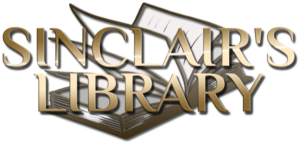The Almanac is written !!
Hi everyone,
We come today with great news: the first book, Sinclair’s Almanac, is fully drafted! It’s now off to the first edit pass. Now, “first edit pass” might be a little vague for some, so we figured we would use this opportunity to give you a little behind-the-scenes insight as to how we operate and produce content at Sinclair’s Library.
The Claim Sheet
For each book, we have a claim sheet, where we manage the book’s scope, content, and progress. How does it work? Each category of content (in the example here, subclasses) has a number of slots allocated.
Some slots are filled with predetermined concepts (such as the Pew Pew Mage). These represent particularly resonant concepts, niches we want to fill, or ideas from the team leads that we’d like to see in the book, but don’t necessarily want to, or have the time to, write ourselves. We mark the concept and leave it up for grabs, letting one of our writers with a passion for the concept flesh it out themselves.
Some slots are left blank, leaving opportunities for our team of talented writers to pitch something cool. They bring an idea forward—sometimes writing a quick draft to give us a better picture of what they’re aiming for—and if the design gets approved, they’re off to the races.

Then comes in the team lead. Team leads are, simply, a smaller team of writers in charge of maintaining cohesion. They do the first fresh read of the design, perform an initial balance check, give the writer their opinion on it, and make sure the design will integrate well with the rest of the book’s content; this includes checking for thematic or mechanical overlap with existing content, as well as directing the writer to another design (and its respective author) that could interact nicely with each other. Once everyone is happy with it, the team lead greenlights the design for edits.
The Editing Process
Once a design is sent to editorial via the Ready for Edits folder, the design’s assigned editor goes through the piece—discussing matters with the team lead if questions arise—performing the second balance check and, well, editing the text. (In the initial edit pass, this is done via comments, giving authors guidance and advice and permitting them to make their own adjustments.) Then the design is sent back to the original writer to address the edits. Edits are made, text is improved, mechanical hiccups are corrected, and the writer tags it “Revised”. Once these revisions are completed to their satisfaction, the writer relinquishes the design for final preparation; from there, our illustrious and tyrannical editing lead Isabelle Thorne does a final edit pass, making sure both the writing and balance passes our high quality standards, and sends it to layout.
5E conversion
At any point during the process, the editing lead is entitled to deem a design “ready for 5e”. This means a rewrite is now off the table, and no conceptual issues have been found. As this point, the “ready for 5e” box is checked—what would we do without Excel?—and the design is placed on the 5e team’s own Claim Sheet, where our conversion director David N. Ross assigns it to a 5e writer. From there, the design undergoes a very similar process, converting the design and making sure it’s ready for layout.
Why this process?
Some of you may be familiar with standard industry practices, and so might know that this is an unorthodox method, slower than the usual creative process. So why so many loops; why so many people involved on a single design? Simply, quality. By letting our writers pitch designs, we make sure much of what’s written for our books is someone’s passion, an idea championed by the writers themselves. By including a team lead in the writing process, we make sure content remains cohesive and aligned with the book’s overall concept, and that this conceptual oversight is shared with the writers. By adding an additional editing loop with revisions performed by the writers, we make sure our more junior writers get to learn and improve from veteran editors, with direct feedback on each design submitted; further, this lets writers remain invested in their designs, rather than casting their content into a black box. All these extra steps—while admittedly requiring investments of both time and money—are intended to guarantee the highest-quality content not only for this project, but for the future of the Sinclair’s line.
Okay, that’s great. What about playtesting?
The Almanac is written, congrats! But I don’t see the playtest content anywhere on this process. Unlike the rest of the phases, playtest is handled on a design-by-design basis. Some designs will be sent to playtest after the first edit pass, others after the second edit pass, and the most complex or innovative may be sent more than once. Designing this workflow took some time, trial, and errors; bottlenecks were encountered along the way, and… well, things got delayed. Our online forms and Discord server are ready to receive playtest feedback, and we are simply waiting for the content to be ready. The good news: you won’t have to wait a month between each playtest package to drop. As the Almanac is fully written, we’re hoping it won’t be too long a wait. Trust us, we’re just as excited for you to see this content as you are to see it!

